Vertical Studies at Sonic Acts
 Monday, February 6, 2017 at 19:30 tagged
Monday, February 6, 2017 at 19:30 tagged  altitude,
altitude,  architecture,
architecture,  instruments,
instruments,  sonicacts,
sonicacts,  sound,
sound,  soundart,
soundart,  soundscape,
soundscape,  soundscapes,
soundscapes,  vertical
vertical 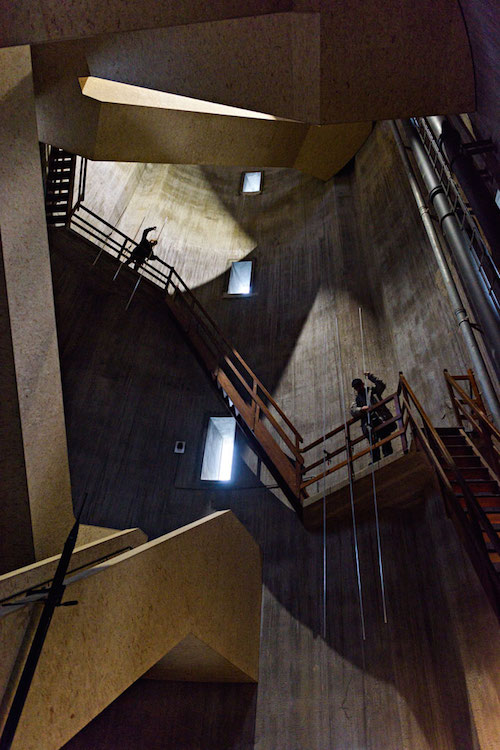
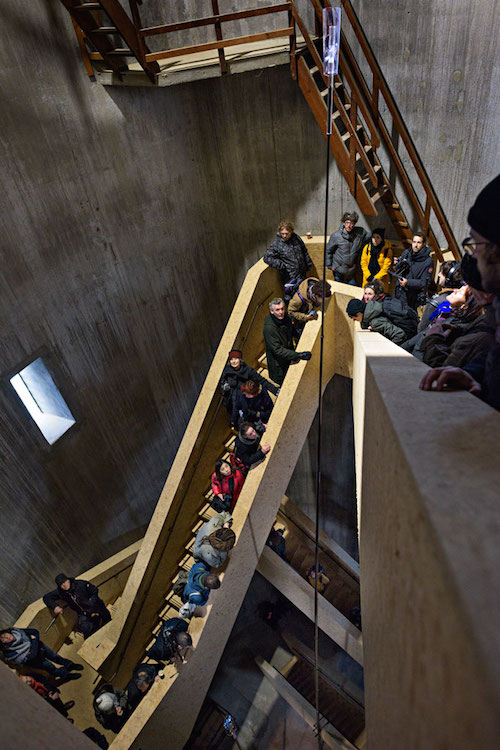

 Monday, February 6, 2017 at 19:30 tagged
Monday, February 6, 2017 at 19:30 tagged  altitude,
altitude,  architecture,
architecture,  instruments,
instruments,  sonicacts,
sonicacts,  sound,
sound,  soundart,
soundart,  soundscape,
soundscape,  soundscapes,
soundscapes,  vertical
vertical 


 Wednesday, October 28, 2015 at 15:51 tagged
Wednesday, October 28, 2015 at 15:51 tagged  architecture,
architecture,  human body,
human body,  sculpture,
sculpture,  soundart
soundart 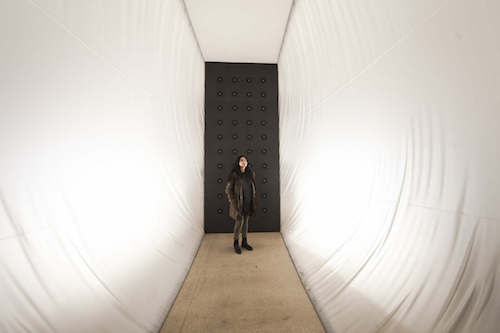
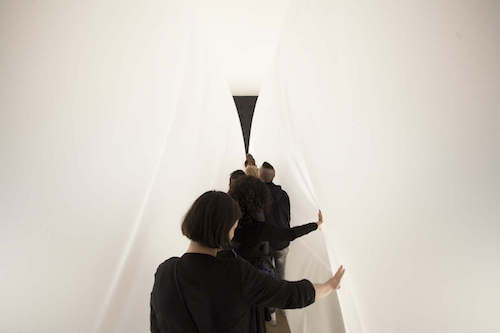
 Wednesday, January 28, 2015 at 12:12 tagged
Wednesday, January 28, 2015 at 12:12 tagged  architecture,
architecture,  balloons,
balloons,  soundart,
soundart,  vibration
vibration 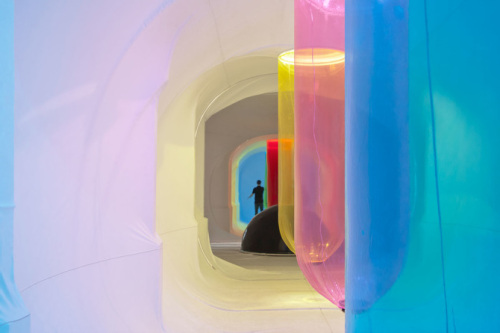
Sound of Light, by Marco Barotti and Marco Canevacci is a synesthetic sculpture which interprets and dynamically transforms sunlight into audio frequencies. It is a site specific installation designed for the former music pavilion in Hamm, Germany, which was built in 1912.

Cameras film the sky and sunlight, dividing it into six colours - RGB and CMY. The six hanging, coloured columns of the pneumatic structure – which stand for the primary RGB (red/green/blue) and secondary CMY (cyan/magenta/yellow) colour models – are designed to receive different frequencies and convert them from visible to audible sensory input. A series of woofers is fixed directly on the bottom of each column and convert the whole architecture into a giant vibrating loudspeaker.
By mixing sound and architecture, the audience experience a unique oneiric reality through the superimposition of colours, shapes, sounds and vibrations. Visitors can also discover their own concert by changing their point of view – an individual spectrum. Sadly, it’s hard to experience vibration through a documented piece, but I can imagine what it would be like to touch the column with a cheek. The structure reminds me of Space Odyssey. A space-ship like structure to experience sunlight using different senses.
Korinsky is a Berlin-based art collective using technologies and the knowledge about human hearing processes to create sound installations that play with the contrast of visual and acoustic impressions. We’ve seen them before here at EL, with their project 3845 m/s.
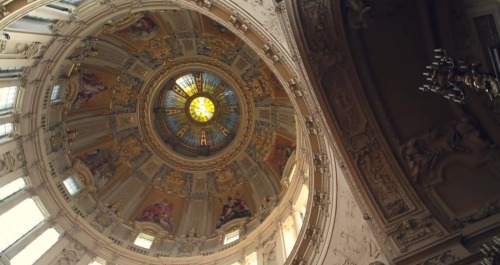
Their latest project is Volum. For this project, Korinsky worked together with a group of architecture students and professor Katrin Günther to explore the non-visual part of architecture. The students got to explore the way the Berliner Dom reacts to sounds, completely imprinting it’s architectonic qualities on the sounds in the dome. The absolutely amazing short documentary explains their work in the best way possible, so I won’t write too much about it.
Brilliant project. In an age where all disciplines seem to shift into each other, sound and architecture seem like two we’d really need to spend more time on. Like the narrator asks at the end of the short documentary:
“Next time you enter a building, think about it makes you feel. How does it affect you acoustically?”
 Tuesday, December 17, 2013 at 14:38 tagged
Tuesday, December 17, 2013 at 14:38 tagged  architecture,
architecture,  installations,
installations,  soundart
soundart 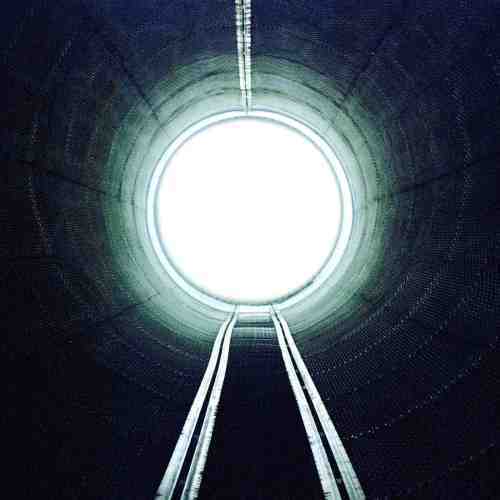
Sound art or installations are often hindered by their surroundings. As sound waves travel through the air, they also travel through walls and ceilings. This makes it difficult to completely close off a space from external noises, especially in an environment like an art museum, for example.
“Dinámicas del Vacío” (translation: “Dynamics of Emptiness”) is a sonic sculpture by artist Ariel Bustamante (we’ve seen work from him before) and architect Alfredo Thiemann. They created an huge artificial and soundproof space, isolated from the exterior. This way they can create a completely different, totally immersive experience. By using a 18 meter long, 3 meter wide suspended tube stuffed with sound equipment such as sub-basses and speakers hidden between the layers of insulation, they can set up an environment totally disconnected from the outside world on an ordinary street.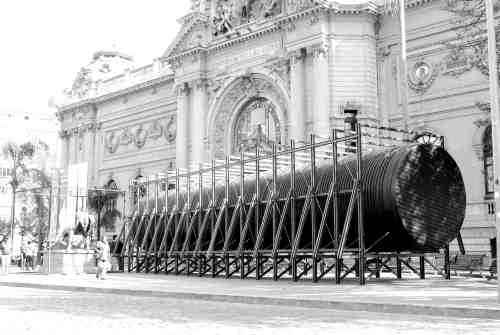
Inspired by a month’s stay in the Antarctic, Ariel Bustamante created a cold, distant, imagined landscape for the viewer to dwell in. Eerie sounds of snow are played against flashing abstract representations of the Antarctic, fueling spectators’ imagination of the unknown.

These kind of immersive experiences are quite scarce. A famous example is the Philips Pavilion, thought up and built by Le Corbusier, Iannis Xenakis and Edgar Varèse for the World’s Fair in 1958. These kind of works show that architecture and sound go hand in hand very well, and the effect the architecture has on the experience of sound is often underestimated.
See the process of placing the installation as well as an impression of the experience (from 04:15 on) in the video below.
 Tuesday, April 2, 2013 at 22:56 tagged
Tuesday, April 2, 2013 at 22:56 tagged  architecture,
architecture,  installations
installations Korinsky Studio consists of Abel, Carlo and Max Korinsky. They mainly focus on their shared passion: exploring the possibilities of using sound in vertical surfaces. 3845 m/s is their newest installation using their own software, in a former coal power plant in Berlin. See the Korinsky Studio website for more information about their work.
 Saturday, January 12, 2013 at 18:32 tagged
Saturday, January 12, 2013 at 18:32 tagged  architecture,
architecture,  installations
installations 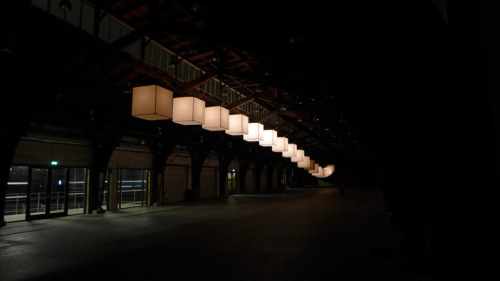
It’s like the building comes alive, it moves and shivers and moans. This is caused by SPINE, and interactive installation consisting of twenty glowing cubes which move around in fluid motions. The sounds you hear, as well as the movement of the cubes, is influenced by visitors who come nearby.
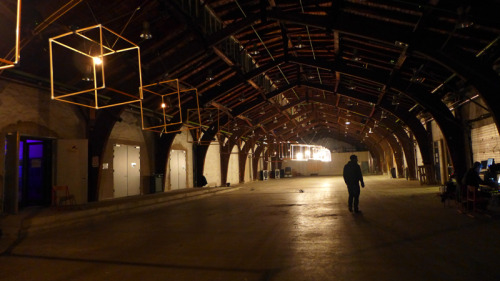
SPINE was created by Kollision, a Danish ‘design office’, and was displayed during the Media Architecture Biennale 2012 in Aarhus, Denmark.
 Monday, November 21, 2011 at 21:43 tagged
Monday, November 21, 2011 at 21:43 tagged  architecture,
architecture,  field recording,
field recording,  urban
urban I just came back from New York City, a place with an overwhelming sound, everywhere you go. And each location in a city like that has its own resonance, its own sonic identity. That’s hard to hear though if there is so much noise around it becomes a cacophony. But what if we could isolate this resonance and listen to the astonishing differences in the sound of urban spaces?
Davide Tidoni did just that with A Balloon for Linz. Luckily Linz is not NYC, and he was able to find spots which were quiet enough to make a clear recording (using his nice helmet mount microphone). You might recognize the concept as Davide did something similar before.
 Monday, September 5, 2011 at 21:45 tagged
Monday, September 5, 2011 at 21:45 tagged  architecture,
architecture,  design
design What does sound look like? It’s a question we have seen answered by quite some artists, creating sculptures of sounds, frozen at one moment in time. Like Yes/No by Carsten Nicolai or the Rolex Tower soundwave sculpture. Never have I seen something like this Orproject design though.
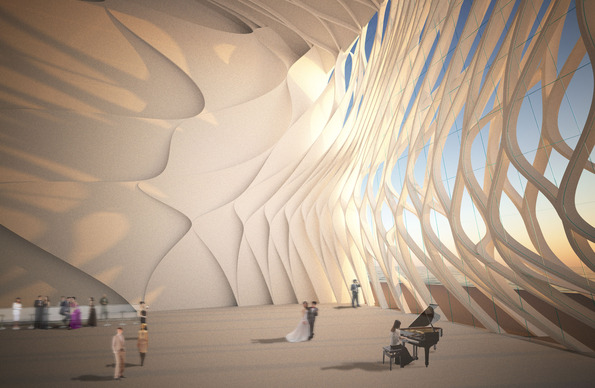
Christoph Klemmt, working for London based architecture and design firm Orproject, made this design for the Busan Opera House in South Korea, titled Anisotropia. The design is based on a twelve tone composition created by Klemmt, and while it remains unknown how exactly the composition is translated to the building, it is quite a remarkable sight, and I can only imagine the acoustic properties of a place like that.
Thanks to Richard van Tol
 Thursday, August 18, 2011 at 17:58 tagged
Thursday, August 18, 2011 at 17:58 tagged  architecture,
architecture,  installations,
installations,  tape
tape 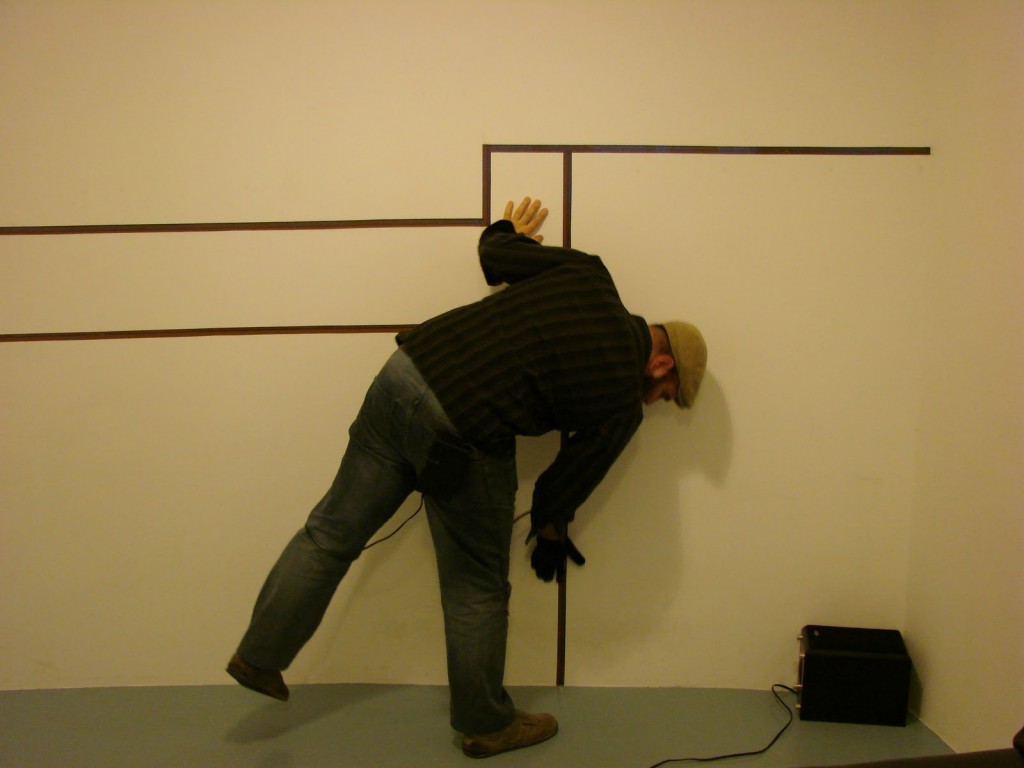
It’s been almost two months since the last post on Everyday Listening. Summer came, I moved to a new house, and went offline for most of the time. Now the start of a new academic year is approacing and Everyday Listening is slowly waking up again.
We start off with Sonophore, an project by the same group of people who made the Analog Tape Glove: Signal to Noise. Instead of a canvas full of tape, Sonophore offers a single line tape across the walls. A glove with a built-in tape head can be used to play tape and explore the sonic possibilities of the installation. To hear what this sounds like, watch the video below: